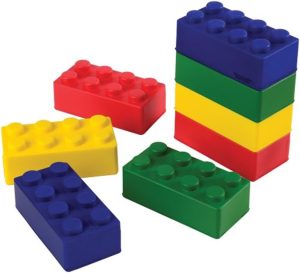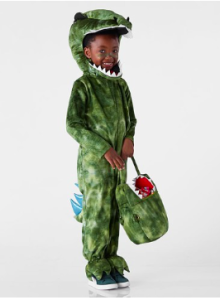A safe environment that promotes health is the baseline expectation for a child care home. There are many policies and procedures to ensure that you, your family, and the children you care for remain healthy and safe year-round.
Flu, COVID, RSV, and general “yuck!” season is upon us, and we’re all trying to step up our cleaning game to keep our children and families healthy. The best trick I’ve learned is to regularly sanitize any toys that can handle heat in the dishwasher or clothes dryer. It takes a lot less hands-on time than hand washing and bleach soaks, and costs less than specialized equipment like electrostatic sprayers.
For plastic or silicone toys:
Some dishwashers have a setting called “sanitize”, which heats the water to about 170 degrees Fahrenheit. Any plastic or silicone toys are going to be able to go in the dishwasher on the top rack. Use a lingerie bag to keep them from getting knocked around or on to the heating element! Avoid placing any toys that use batteries or other electronic components in the dishwasher, or that have wood or metal pieces, as the heat and detergent will degrade these materials quickly and could make them unsafe.
If your dishwasher does not have a “sanitize” function, just look for “hot water” or “high heat” setting. Using detergent that also contains chlorine (look for “chlorinated” or “contains sodium carbonate, sodium hydroxide, sodium hydroxide, sodium silicate and/or chlorine bleach”) will also kill viruses, including influenza and COVID.
As with any other cleaning procedure, ensure materials are rinsed and completely dry before returning them to children to prevent the accidental ingestion of cleaning products.
A note about silicone dishes and toys: these can hold on to the smell and taste of any soap or detergent. If your babies suddenly don’t want to use silicone teethers or cups, and the materials are 100% silicone with no other plastics, they can go in the oven at 250 degrees Fahrenheit for 30 minutes. When you take them out, if you no longer smell soap/detergent, just let them cool before use. If they still have a smell, check again in 15 minute increments until they smell normal.
For plush toys, dress-up, pillows, etc.:
Your clothes dryer can also heat materials enough to kill bacteria, viruses, and insects (goodbye, head lice!). If your dryer doesn’t have a specific “sanitize” setting, put it on the highest heat setting for 45 minutes. Check tags prior to drying to ensure your materials won’t break or shrink.
Getting your found treasures ready for little hands.
Ok, you have made it to the resale shop or garage sale and purchased a few boxes of toys; you got them home and discovered several of the toys don’t work or are on the recall list. Every resale buyer should have a supply bag at-the-ready to take on resale shopping trips. The bag should contain disposable or washable gloves, batteries (at least 8 of each size AA, AAA, C & D) screwdrivers, (Phillips Head, Slot Head, Allen Wrench) in varied sizes. You will need your smartphone with Internet access to check for recalled toys and equipment before you buy them.
When you get the toys and equipment home, it’s time to “love on them.” Loving on your toys and equipment is another way of saying clean them. My new purchases go from my car to the garage where I use a bucket filled with a mixture of Dawn and hot water. I use a second bucket filled with clear water to rinse them. The last step includes the use of a spray bottle filled with bleach and water. It is important to inspect all toys and equipment before you purchase them, but if you find sharp edges or missing pieces once you get them home, toss them in the garbage. The harm that could come to the children is not worth keeping the damaged item. Place the toys on a clean, dry towel and allow them to air dry before bring them into the house. Loving on your toys and equipment should happen often and not only when you have purchased previously owned toys. Toys that are mouthed should be gathered for cleaning as soon as the child puts them down. Your other toys should be cleaned and disinfected at least once a week. Happy shopping!
Recalled toys
http://www.cpsc.gov/en/Search/?query=toys&filters=recalls&date=all
Types of screwdrivers types images
http://www.primermagazine.com/2012/learn/screwdriver
Cleaning and Sanitizing: What’s the difference and how are they done?
http://ncchildcare.nc.gov/pdf_forms/bleach_solution_fact_sheet.pdf


